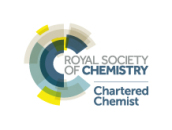Songwon enters the Lubes market (Updated 29/05/17 and 17/10/17)
Songwon created a few ripples when it entered the (Fuels and) Lubricants market at the end of 2016 with the phenolic antioxidants - plus one phosphite antioxidant - that it has previously only offered into plastics manufacture. However, I’m sure most just viewed it as a no brainer for the Korean chemical company. Why choose to not sell into Lubes when all your competitors do?
So, it’s difficult to imagine anyone other than shareholders in SI Group and BASF being disappointed by this move. From a buying side, what’s there not to like in more supply security from a wider set of supply options and a new player in the market to introduce some price competition? There’s even a hint of a new product in the pipeline.
Portfolio
Songwon’s brochure (complete with chemical error) can be accessed here. As befits a major player in the plastics industry, the portfolio has a lot of commonality with those of SI Group and BASF. Indeed, if you take the Songnox® name and replace “Song” with “Irga”, you get the name of the BASF equivalent for Songnox® L101, L107, L109, L115 and L135. The first two have SI Group equivalents, respectively: Ethanox® 310 and Ethanox® 376.
SI Group and Songwon also market 2,6-ditertiary butylphenol (Ethanox® 701, Songnox(R) 2,6-DTP, once upon a time Irganox® L140) and all three offer the phosphite antioxidant tris(2,4-ditertiary butylphenyl) phosphite as Songnox® 1680, Irgafos® 168 or Ethaphos® 368.
New(-ish) Molecule
If you’re not looking at competitive pricing or supply security for your current purchasing needs, then the most interesting molecule in Songwon’s portfolio is Songnox® L137, the 2-ethylhexyl equivalent of Irganox® L135/Songnox® L135.
As this is made using the widely available 2-ethylhexyl alcohol, rather than Exxon’s occasionally unavailable Exxal® 8, there must be a good reason why Ciba and then BASF built their product line on the Exxal®-derived molecule.
Like the L135 materials, Songnox® L137 is a liquid, so physical form was not the reason that Ciba (as was) went with the Exxal® 8-derived isooctyl group as the alcohol in the ester. When I asked BASF and ex-Ciba people several years ago for data to differentiate on performance, they said that the data was so old that there was no-one in the company who knew the answer. However, I have a vague memory of a Ciba representative at the turn of the century claiming that they had manufacturing patents that protected the business. Did they fool the competition into thinking that the molecule that became Irganox L135 was so much more effective that it wasn’t worth pursuing a 2-ethylhexyl analogue?
If Ciba did indeed “fool” anyone, they did an exceptional job, as a search for currently available 2-ethylhexyl derivatives, resembling Songnox® L137 does not bring up many good hits. Indeed, the two hits on the CAS number - Green Chemicals and Rianlon - bring up molecular structures that are not 100% consistent with the CAS number 144429‐84‐5.
It will be very interesting to see performance data from Songwon.
Update May 2017
Songwon announced at the 2017 STLE that it was adding its first aminic anti-oxidant to its lubricants portfolio: a nonylated diphenylamine, Songnox® 670.
This opens a new front against BASF and – because it is a direct chemical equivalent to Naugalube® 438L - brings LANXESS (Chemtura) onto the competitive battlefield. Direct competition between Songwon and LANXESS has some spice, as Gerard Mulqueen, the Global Business Manager, Fuel & Lube Additives for Songwon held a similar position several years ago at Chemtura!
So, more power to the customer, we hope. However, the leverage/choice for end-users may be limited, as each supplier offers unique combinations, limiting the possibility of wholesale switching.
Some may be tempted to try the nonylated material as a drop-in to applications usually dependent on Irganox® L57 or its analogues (butylated/octylated diphenylamine), but this is not my experience. Old Ciba TDSs state: "IRGANOX L 57 provides better inhibition of bulk oxidation of engine oils, under high temperature conditions, than a nonylated diphenylamine".
Indeed, if there wasn’t any differentiation, why would LANXESS offer both Naugalube® 438L (nonylated) and the direct Irganox® L57 equivalent, Naugalube® 750?
Update October 2017
Fuels & Lubes International had an article on Songwon's move into Lubricants in their Quarter 3 2017 magazine, which can now be accessed on-line.



